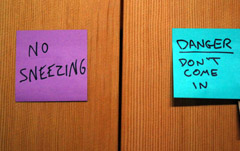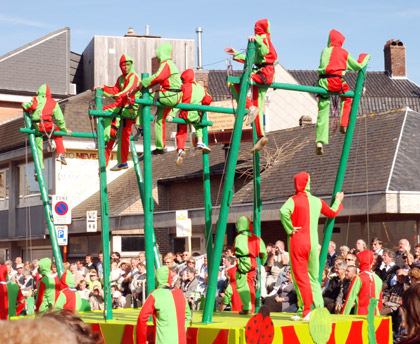It’s hard to spend much time drinking local beer in Oregon and not get excited about what’s in the glass.
Not only in Portland — which was at the center of the recent “best beer city” silliness — but in Pacific City, Enterprise, Eugene, Hood River, Newport, Bend, Parkdale and, gee, the list never seems to end. Although a few breweries ship their beer far from home, and that’s a fair amount of the state’s production, the majority simply sell local beer to local drinkers.
 This is not to say every beer was great, but Oregon’s been leading the nation since the mid-90s and somehow there’s still more local beer than there was not long ago, better and a wider variety, with more people drinking this beer in more places. Having visited forty-six states since we left home thirteen months ago I feel pretty confident typing there is no other like Oregon. And although I’m not sure why this makes sense to me, and appreciate it might not to you, leaving Oregon the other day made me stop to appreciate what I’ve seen elsewhere. I wouldn’t say other states are catching up so much as they are in hot pursuit.
This is not to say every beer was great, but Oregon’s been leading the nation since the mid-90s and somehow there’s still more local beer than there was not long ago, better and a wider variety, with more people drinking this beer in more places. Having visited forty-six states since we left home thirteen months ago I feel pretty confident typing there is no other like Oregon. And although I’m not sure why this makes sense to me, and appreciate it might not to you, leaving Oregon the other day made me stop to appreciate what I’ve seen elsewhere. I wouldn’t say other states are catching up so much as they are in hot pursuit.
In Florida, which has never been known for breweries making particularly frisky beer, suddenly you have Saint Somewhere Brewing and Cigar City Brewing making cutting-edge beers. In Kansas City, Boulevard Brewing recently released Two Fools Double Wit, its latest seasonal in the Smokestack Series, a beer that starts from a “sour mash.” In Pittsburgh, Scott Smith at East End Brewing used 60 loaves of rye bread to brew an old-style Russian beer called Kavass.
I grew up working for newspapers, so skepticism is second nature to me. I find it hard to believe that sales of beer that costs far more than people were paying a few short years ago can continue to be so robust given the current economy, but so far I’m wrong. We’ll discuss why another time. Instead consider something from Mike Kallenberger, Insights Manager at MillerCoors. “One thing I’ve learned is once a trend starts it can keep going longer than you’d expect,” he said. Discussing what’s referred to as the “adoptive curve,” he added, “I don’t think craft beer has begun to reach the tipping point.”
Maybe not even in Portland.
What’s astonishing is that you can have so many pretty big brewing companies and so many small ones in the same city. It’s only about a 15-minute walk from Widmer Brothers, which is celebrating its twenty-fifth anniversary, to Upright Brewing, which began selling beer in April. Widmer is thoroughly modern, fermenting more of its flagship Hefeweizen in a single unitank than Upright will sell this year. (Widmer’s tanks have a capacity of 1,500 barrels, but are only filled with 1,100 barrels of Hefeweizen.)
Upright is located in the basement of a renovation-in-progress called the Leftbank Project. Founder/brewer Alex Ganum hadn’t even started school when Kurt and Rob Widmer founded their brewery in 1984. He calls Upright a farmhouse brewery and is employing open fermentation; wide open, as in no tops at all on two fermenters in a special-built room. He recently added a Post-it note to the entry that reads, “Don’t sneeze.” (That’s the photo at the top.)
He resists the efforts of others to classify his beers as “Belgian.” “I feel like we are more Northwest than anything,” he said. “We’re big (Frank) Zappa fans here. I think Zappa’s music is a lot like our styles.”
Listening to him I thought of a conversation last summer with Dan Carey, co-founder and working brewmaster at New Glarus Brewing in Wisconsin. He was happily showing off his brand-spanking-new brewery, a $21 million beauty built strictly based on demand within Wisconsin; New Glarus doesn’t ship its beer beyond its home state. “We like to talk about local,” he said. Now the discussion turned to influences and Carey considered the question about if he could describe himself more as a German, Belgian, English, Czech or American brewer.
He couldn’t. “I’m like the Japanese, or like the Australian winemaker,” he said. “I try to learn from everybody and take what I can use.”
The result is better local beer.
 The most mentioned destinations for
The most mentioned destinations for 
 This is not to say every beer was great, but Oregon’s been leading the nation since the mid-90s and somehow there’s still more local beer than there was not long ago, better and a wider variety, with more people drinking this beer in more places. Having visited forty-six states since we left home thirteen months ago I feel pretty confident typing there is no other like Oregon. And although I’m not sure why this makes sense to me, and appreciate it might not to you, leaving Oregon the other day made me stop to appreciate what I’ve seen elsewhere. I wouldn’t say other states are catching up so much as they are in hot pursuit.
This is not to say every beer was great, but Oregon’s been leading the nation since the mid-90s and somehow there’s still more local beer than there was not long ago, better and a wider variety, with more people drinking this beer in more places. Having visited forty-six states since we left home thirteen months ago I feel pretty confident typing there is no other like Oregon. And although I’m not sure why this makes sense to me, and appreciate it might not to you, leaving Oregon the other day made me stop to appreciate what I’ve seen elsewhere. I wouldn’t say other states are catching up so much as they are in hot pursuit.